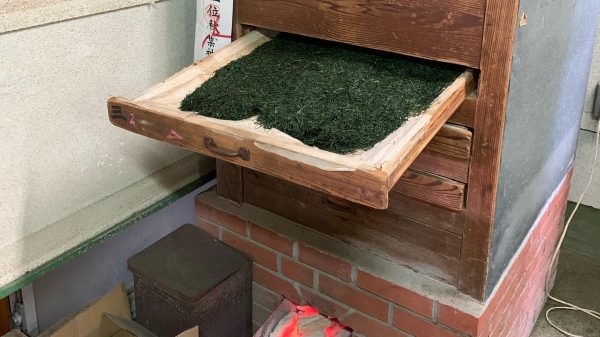MANUFACTURE
MANUFACTURE
MANUFACTURE
In the undercover tea garden, the shoots are covered for at least 20 days to produce tender, green, dark buds.
At Yamashita Shinjuen, all the tea leaves are carefully harvested and finished by hand.
An introduction to the Gyokuro tea making process.
Harvesting
Only shoots in good condition are handpicked by skilled pluckers. Unlike machine plucking, there are no old leaves or stems in the tea, resulting in very beautiful tea leaves.
Steaming machine
Steeping the tea immediately after plucking stops the oxidising enzymes from working. This is the process by which most Japanese green teas are produced.
Coarse Rubbing Machine
Transfer from the steaming mashine to a coarse rubbing machine.
When the tea leaves come out of the steaming machine, they have a moisture content of over 80%.
The steaming is adjusted with great skill.
The amount of air, the temperature of the hot air and the speed of the rotation of the rubbing shaft are changed to rub out the moisture in the tea leaves and dry them so that they do not dry up.
Twisting Machine
This is the process to make up for the lack of rubbing and unevenness of drying in the rough rubbing and to make the moisture even. The tea leaves that have been rubbed by the rough rubbing machine are put on the weight and rubbed in a rolling manner. This process is mainly used to release the moisture from the stems, so that the moisture content of the leaves and stems is almost the same.
Medium Kneading Machine
Hot air is applied to the tea leaves while they are being rotated to dry the water that has risen to the surface.
After the tea leaves have been rubbed in the middle rubbing machine, they stick to each other and form round balls. The tea leaves are then loosened one by one.
Precision Rubbing Machine
The fine rubbing is the final stage. It is the final stage of the tea making process, where the tea is rubbed long and thin and dried at the same time. This is the final stage of the tea making process.

Drying
After the fine rubbing is finished, the tea is put into the dryer. When the piles of fresh leaves are dried to make tea, they lose their water content and weigh about one-fifth of their fresh weight. If they are not dried sufficiently, they will turn red, smell bad and will not keep well. If the tea is put in the dryer too long, it can lose its aroma and turn red.
Finishing Touches
The dried tea leaves are stored in a tea box in a place where there is little temperature variation.


